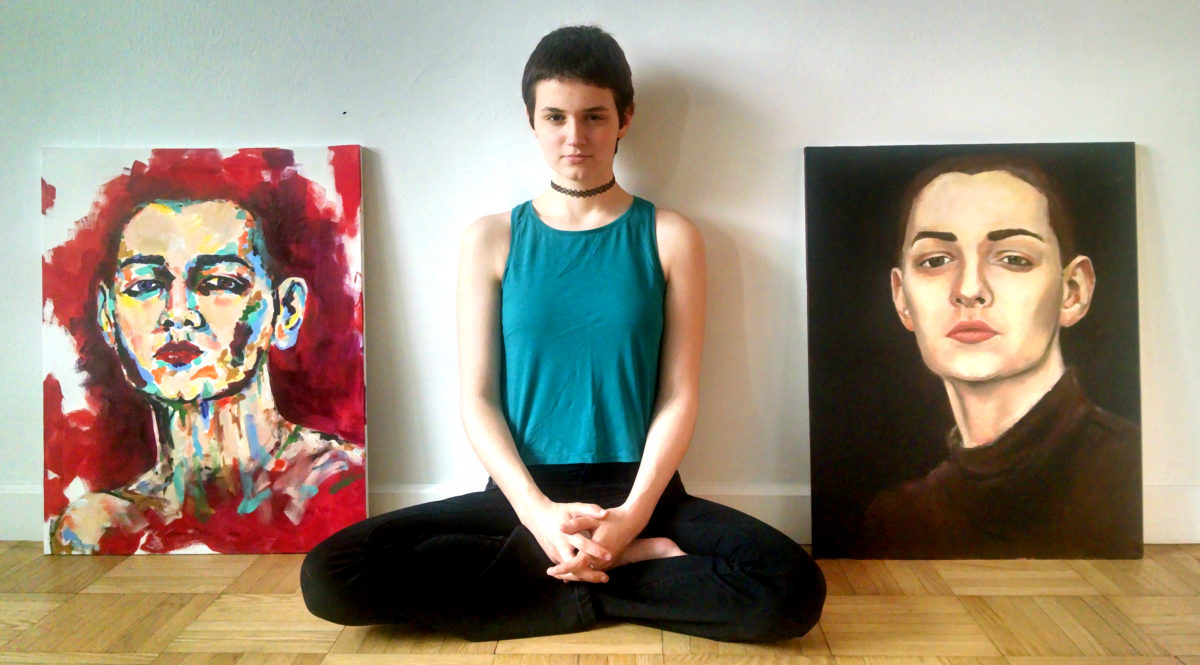That’s how we are raised and learn to behave. To be fair, men also want to be likable (at least some of them 🙂 ). But for men, it seems to be a matter of choice and personal preferences. For women, such behavior is systematic and affects girls as young as five years old.
An obvious driving force behind a women’s tendency to want to be likable is that they can’t always afford not to be. Women continue to experience lower social status, less economic and physical security, and less power to change their condition – for them to not confront, or displease, a more powerful group appears only a reasonable manner of conduct. In other words, women are not necessarily pleasers-born, but learn to behave as such to survive under conditions of inequality.
In this post, I want to argue that even though gender inequality is still here, things have changed and under new conditions being likable is not the most rewarding strategy.
To start, let’s look at the graph from OkTrends, a research blog that analyzes data from dating site OkCupid. The graph shows pictures of two girls, votes on their attractiveness on the scale from 1 to 5 (the highest), and a number of messages they received compared to a number of messages received by an average OKCupid user in a month.
Note. I don’t know who these girls are, but I think they are very brave to have agreed to serve as an example in this study. Thanks, girls!
As you can see, both girls have the same average attractiveness score, around 3.4 out of 5, but for whatever reason the amount of response they collected from their network differs dramatically – the girl on the right received almost 3 times more messages than the girl on the left, 0.8 vs. 2.3 times compared to an average number of messages.
Why is that? Why, in spite of being equally cute, do girls evoke different reaction? The theory says that the more emotional we get, the more likely we act. Emotions are one of the strongest factors that drive actions and influence decisions. In our graph, higher emotions on a voter’s side show themselves through extreme scores, – the ones on the red left and the ones on the bright green right. Comparing allocation of the scores on both pictures we can notice that while the left picture serves as an example of an average likability, the right picture reflects controversies and emotions. The girl on the right does indeed make voters more emotional, – they either like her very much or don’t like her very much, – but in both cases, they are more likely to send her a message.
Now, the most important part here is that not all messages the girl on the right received were positive, – those voters who placed her at the least attractive end of the scale might very well feel inclined to inform her about their opinion. But she (hopefully!) didn’t care because she also received a lot of very positive messages. And this is, in my opinion, a great takeaway from this graph – to be different and unconventional is riskier because not everybody will approve you, but it is also more rewarding because those who will, will do much more for you and will go much farther for you.
Unfortunately, too many of us fall into a trap of an “average likability” way too quickly. We do so because we want to avoid the pain of “red votes”, a misery of those excruciating “No” answers. Naturally. But we forget that we pay for this with the “green votes”, the solid and reliable “Yes” answers. In other words, a lot of polite “Maybe”s mean fewer “No”s, that’s true, but they also mean not so many “Yes”s. And that is what’s wrong with being “averagely likable” – by not building our personality and by not making a bold statement on who we are we lose opportunities to create a stronger support for us and for what we do.
In writing this I of course realize that not every woman in the world can afford being untraditional and unconventional – in many parts of the globe women still lack basic security and are punished for stepping outside of an approved by society zone. Away from big cities and international hubs where diversity is a norm, being conventional is a security measure and the only choice for women because “red votes” may become much more dangerous for them than a simple disapproving message – anything from teasing and mocking to public humiliation to physical abuse and rape to (honor) killing.
But for those of us who can be unconventional and have an impact – let’s do it. Let’s not overestimate the risk from “red voters”, let’s be ready to face disapproval, and let’s step outside of our comfort zone of an “average likability” and actually do something remarkable.
A personal story. When I was a kid, probably 9 or 10, I stumbled upon a book called “How To Win Friends And Influence People” by Dale Carnegie. It’s an old book, first published in 1936, but you may still be familiar with it. I read it, adopted some of the principles, ignored the others, and forgot all about it. Until recently, when under some circumstances I decided to revisited the book. And I was surprised with what I actually took away from it. Out of numerous important skills the book addressed such as influencing people, leading people, resolving conflicts, and so on, the ones I adopted all came from a chapter dealing with how to make people like you. I don’t think it’s a coincidence. Apparently by the age of 10, I had already learned that being likable was one of the most important skills in my then life.
But things have changed since then. With this blog I’m stepping out of my “conventional” zone. I know that not everybody who will read my blog will like it. But that’s ok, because those who do, will be of a much stronger support for me and for my initiative.
In conclusion, I want to reiterate that I’m not calling for us to be intentionally unlikable and stubbornly unconventional for the sake of being unlikable and unconventional. No. Nothing is inherently wrong with being likable. It’s good when people like you. But when your urge to be likable stands in a way of you achieving a bigger you, then it’s time to reconsider your priorities. I’m talking here about situations when we sacrifice our personalities for a safer option of conventionality and likability. I’m also talking about situations when we discourage our friends from building their personalities. I’m also talking about situations when we teach our daughters to be likable without teaching them to be somebody first. We don’t have to do that any more. In those parts of the world where women have achieved basic security, it’s time to move beyond common conventionality and average likability to the world of bright personalities and bold characters, where women are not afraid of being different, charismatic, stylish, and remarkable. But above all where women feel that they are right in doing so.
Illustration. Paintings on the cover photo are by Polina Bakhtina


